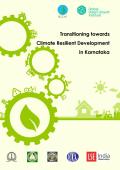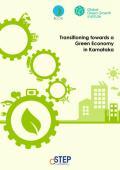

The science is unequivocal: stabilizing climate change implies bringing net carbon emissions to zero by 2100 if we are to keep climate change anywhere near the 2°C warming that world leaders have agreed on as the limit. Decarbonizing Development: Three Steps to a Zero-Carbon Future looks at what it would take to decarbonize the world economy by 2100 in a way that is compatible with countries’ broader development goals. The book argues that all countries must:
(i) Plan ahead with an eye on the end-goal so as to enact the right policy mix that will allow them to take advantage of options that offer immediate local co-benefits while taking actions that will allow them to reach the long term objective and avoid locking in carbon-intensive patterns and higher future expense.
The most comprehensive inventory of climate finance to-date, The Global Landscape of Climate Finance 2014, finds that global climate finance flows have fallen to USD 331 billion – far below even the most conservative estimates of investment needs. It also provides a detailed overview of the methodological challenges involved in tracking global climate finance flows. In addition to that, this report supports serious debate on these key questions by drawing together climate finance data from numerous sources to present policy makers with the most comprehensive information available about the scale, key actors, instruments, recipients, and uses of finance supporting climate change mitigation and adaptation outcomes.
Risk — whether real or perceived — is the single most important factor preventing renewable energy projects from finding financial investors, or raising the returns that these investors demand. It is also one thing that policymakers can cause, control, alleviate, or help mitigate. In a series of three studies, titled Risk Gaps, CPI maps the availability of risk instruments against demand and analyzes several new, potential instruments designed to address the biggest gaps: first-loss protection instruments and policy risk insurance.
